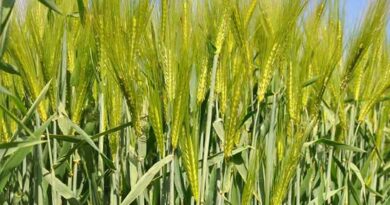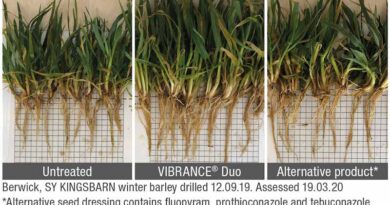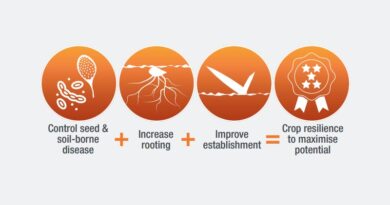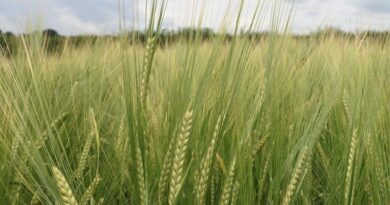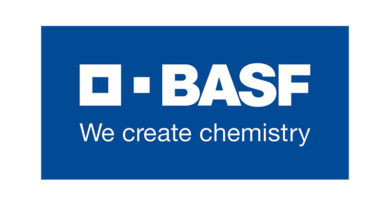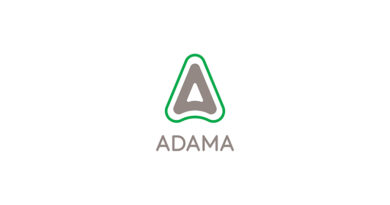Managing disease at T3 in winter wheat and T2 in spring barley
06 June 2023, UK: T3 in winter wheat and T2 in spring barley mark the last real opportunities to maximise crop potential.
Both are key timings to protect crops through grain-filling.
Winter wheat disease management at T3
Whether you’re a feed wheat grower pushing for yield, or a milling wheat grower looking to achieve contract specifications on quality (and achieve good yields), an effective T3 (ear) fungicide spray is key.
But while T3 is crucial for targeting diseases that affect the ear – such as Fusarium, Microdochium and sooty moulds – this season it could also have added significance for topping up control of foliar diseases, particularly on the flag leaf.
This follows the wet spring which fuelled high Septoria tritici pressure. If T2 (flag leaf) sprays were applied earlier than usual due to the high risk, it could mean they ‘run out of steam’ early, just when grain sites are filling.
We have also seen yellow rust pressure building across a number of varieties in our trial plots in Oxfordshire as the weather turned warmer during May.
Similarly, the pre-conditions for high brown rust risk have been met this season. The winter was relatively mild and, from historic trials data, we know there is a correlation between winter temperatures and the incidence of brown rust.
If the focus was on managing Septoria tritici earlier, and fungicides that were less effective against rust were used at T1 and/or T2, corrective action may be needed to tackle rust at T3.
Ultimately, the weather will play a big role in determining late season disease pressures. Typically, warmer weather causes diseases to cycle faster and also favours brown rust. Wet conditions will favour late season Septoria tritici and Septoria nodorum pressure as well as Fusarium.
With all these factors, the importance of the T3 spray timing to not only manage ear diseases but also to fortify late season foliar disease control could be significant this year.
Is there a case for using an SDHI fungicide in wheat at T3?
Given the issues mentioned above, there may be a need to top up foliar disease control, and provided a foliar SDHI has only been applied once in the programme so far this season then an SDHI at T3 could be very much worth considering this year.
Although the number of grain sites per ear will have been fixed early in the season, by controlling late season disease and improving green leaf retention, it allows individual grains to continue filling for longer, increasing yield and specific weights.
Reasons to consider Elatus Era at T3 in wheat
The typical timing for applying the SDHI-based fungicide Elatus Era (benzovindiflupyr (solatenol) + prothioconazole) in wheat is normally T1 (or potentially T2). However, if a fungicide containing solatenol has not been applied to the crop previously this season, and provided only one foliar SDHI spray has been applied in total, it can certainly be a good option to consider including at T3 in years such as this.
Its latest time of application is up to and including anthesis complete (GS69).
Here are some of the reasons to consider it:
- As a ‘top up’ for Septoria tritici control (sensitive strains)
- For excellent yellow rust control
- For excellent brown rust control
- For activity against Septoria nodorum – affects ears (glume blotch) and leaves
- For green leaf retention benefits
- For persistent protection (it is a long time from the flag leaf spray to harvest)
It could be particularly relevant if fungicides with reduced rust activity were used earlier in the programme and/or if T2 was applied early and there is a risk of it ‘running out of steam’.
It could also be particularly relevant in feed wheat where pushing for output. Combined together, wheat ears and flag leaves contribute over 60% to yield.
To find out more from the AHDB website, click here.
Across a number of varieties, Elatus Era at T3 has produced higher yields than a prothioconazole/tebuconazole mix.
Targeting Fusarium and mycotoxins
Quite rightly, Fusarium risk often drives T3 fungicide decisions. This clearly remains extremely important given mycotoxin risks from Fusarium. As well as choosing an appropriate Fusarium-active fungicide and applying it at a suitable dose, achieving the correct spray timing (GS63-65) is critical when targeting Fusarium.
However, while Fusarium may be a key target, this does not preclude the inclusion of Elatus Era at T3 for other diseases, although it will still be important to top up with an extra Fusarium-active triazole as appropriate where there is a Fusarium risk.
For more information on Fusarium and mycotoxins click on the web links here, and here.
What about other ear diseases in winter wheat at T3?
As well as Fusarium, other diseases such as Septoria nodorum, Microdochium and sooty moulds (caused by Cladosporium and Alternaria) can also cause ear problems in wheat.
The traditional T3 fungicide of Amistar remains another very useful product as part of a T3 tank mix. As well as very good yellow rust and brown rust activity, Amistar also has activity against Septoria nodorum, Cladosporium and Alternaria.
Protecting grain and ear quality in milling wheat varieties
If you grow milling wheat, then grain quality (e.g. specific weight, protein content, bright sample and a high Hagberg falling number) is vital.
While no ear spray treatment can guarantee meeting top contract requirements, you can at least stack the odds in your favour.
Achieving good disease control in general is associated with improved grain-filling and therefore improved specific weight.
Rust ‘feeds’ on the plant, therefore controlling rust can help to increase grain protein.
And preventing sooty moulds is key to producing a bright sample. Fail to get on top of Cladosporium, for example – one of the key causes of sooty mould – and there’s a risk of sample rejection due to discoloured grain.
Reasons to consider Amistar at T3 in wheat
Amistar + triazole at T3 has several quality benefits – including increased specific weights and ‘cleaner grain’ following control of quality-sapping diseases (the ‘golden ear’ effect).
Other reasons to consider including Amistar (along with a suitable triazole) at T3 in wheat include:
- Glume blotch (Septoria nodorum)
- Yellow rust
- Brown rust
Tank mix with a suitable Fusarium-active triazole to counter mycotoxin risk.
Never exceed the maximum number of permitted applications or maximum permitted total dose for any product or fungicide group. Always read the label.
Spring barley disease management at T2
Approximately 60% of the yield from fungicides in spring barley comes from the T2 spray, which is typically applied at GS45-55. Therefore, protecting the green leaf area of the crop (and therefore grain-filling) with an effective T2 fungicide is important.
By protecting grain-filling, it also plays a key role in protecting specific weight. Increasing yield also helps to dilute grain nitrogen (N), which is important if targeting the lower grain N malt distilling market.
In lower disease risk situations or in later-drilled crops in England, it may be possible to apply a single fungicide spray in spring barley, typically at GS37-45, rather than a T1 plus T2 programme. However, the most complete protection will come from two sprays, and this may be preferred in Scotland where the growing season is longer.
Protecting spring barley green leaf area
June (when the T2 spray in spring barley is typically applied), and into July marks the peak period for daylength. Maintaining green leaf area to absorb as much of this sunlight as possible is key.
Pressure from the wet weather diseases, Rhynchosporium and net blotch, has been high this season after the wet spring. Also, brown rust has started appearing.
See spring barley variety resistance ratings here.
Even in crops where few disease symptoms are visible at T2, it is important not to be complacent. As with other fungicide timings, T2 is there to protect the crop’s future. As the weather warms, later-season disease can rapidly increase.
Brown rust in particular likes warmer weather. By applying fungicides before disease is established, will give the best results.
Provided it hasn’t been applied to the crop before and provided that no more than one foliar SDHI has been applied to the crop, Elatus Era is an excellent option to consider at T2.
Prothioconazole is likely to remain a key component in barley fungicide programmes. Elatus Era contains prothioconazole, co-formulated with the SDHI fungicide, solatenol, for long-lasting protection.
As well as label approval against Rhynchosporium and net blotch, Elatus Era is highly relevant because it also offers powerful control of brown rust.
Benefit of Elatus Era at T2 for spring barley green leaf retention
Managing Ramularia in spring barley
Ramularia infects the crop earlier in the season but manifests when the crop is exposed to stress.
Ensuring the crops optimum nutritional status will help minimise stress The fungicide folpet has very useful activity against Ramulariaand being a multisite, its inclusion in the fungicide programme is excellent for resistance management.
The most effective timing for fungicide applications against Ramularia is a preventative spray during booting (GS45-49). Often, folpet is included in the T2 spray, but once Ramularia symptoms develop on upper leaves post-flowering, treatment is not effective.
Benefit of including folpet in fungicide programmes (e.g. with Elatus Era at T2) for spring barley yield
Reduced brackling in spring barley
Another benefit of a good fungicide programme seen in trials is reduced brackling. This is believed to be due to the creation of healthier stems.
Reducing brackling not only reduces the risk of ears shedding but can also make harvesting easier, as brackled plants can become tangled together.
Trials have shown that Elatus Era at T2 can help to reduce brackling.
Also Read: Rajasthan Government categorizes Agrochemical companies based on sample report
(For Latest Agriculture News & Updates, follow Krishak Jagat on Google News)


